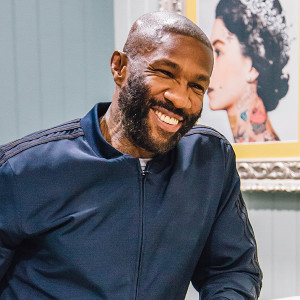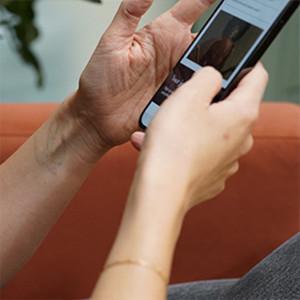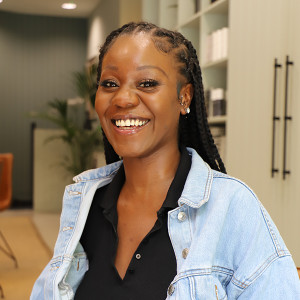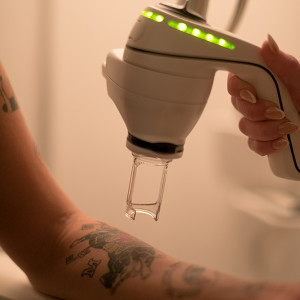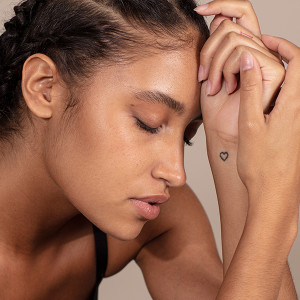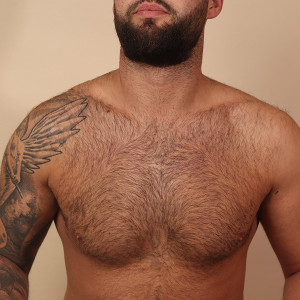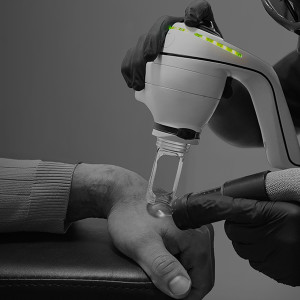MARCH 21, 2023
“A Reclaiming of the Physical Self”: NAAMA Interviews Professor Viren Swami
In the second part of our interview with Professor Viren Swami - yes, we gleaned enough from the expert on tattoos and body image to fill two blog posts - we discuss tattoo trends in 2023 and look at how culture has thankfully moved on from the negative stereotypes of the 2000s.
For Viren, tattoos are “a reclaiming of the physical self” – a potent and empowering symbol of our individuality and creativity. They offer people the chance to express themselves and to stake a claim over their bodies, bodies that society has historically tried to regulate and control.
Read on for his analysis of tattoo culture, and for a clear sign of how far we’ve come into a bright new future.
Publish Date in article
We know plenty of incredible, visible female tattoo artists - NAAMA
NAAMA: In our first conversation we spoke about tattoos and the need to represent ourselves as individuals. Where does this all fit in with cosmetic surgery and trends on Instagram that increasingly push people towards similar looks and styles?
I think, in one sense, the pressures are very similar. We all grow up in societies that tell us that being attractive means certain things. If you are attractive, you'll be more successful and be more popular, you'll be happier in your life, people will treat you better, and so on.
So, I think the pressure, certainly when you have this ideal version of what it means to be attractive, means that people end up comparing themselves to what they see on social media and elsewhere in society. And so, some people come to essentially fear that they are deficient, they feel like there is something absent that they can rectify through cosmetic surgery. And a lot of cosmetic surgery is presented as an individualised way to rectify the deficiencies of your physical self.
With tattooing, though, I don't see it as a rectification of the physical self necessarily, rather it is a reclaiming of the physical self. So with a lot of cosmetic surgery you are essentially saying ‘I'm going to fix what's broken.’ With tattooing, it's ‘I want to be the best version of myself that I can be.’
NAAMA: We were fascinated and shocked to read your study unpicking the “ladette” stereotype of the late 2000s. Of course, society has moved on from that negativity, but would you tell us a bit about some of the preconceptions that remain around tattoos?
At the time “ladette” culture was such a mainstream topic. So, we wanted to see what impact tattooing had on people’s perceptions. We found that our participants rated tattooed women as less attractive, more promiscuous, and to be heavier consumers of alcohol.
I suspect that if we ran the same study today, we’d find more or less the same thing. Tattooing is still viewed as a highly gendered behaviour, such that it is stereotypically perceived as being more “acceptable” for men.
But it’s not just about who gets tattooed, it's where they get tattooed. In other words, where we get a tattoo is gendered. For example, even today, it seems more acceptable for a man to get a tattoo on the arm compared to a woman.
Again, these are kind of symbols and they are symbolic of how we construe gender and what it means to perform gender in a particular society. And that can change. I think it is changing. I think as women become more visibly tattooed, you will see things beginning to change
NAAMA: Yes, and as we well know at NAAMA, there are plenty of incredible, visible female tattoo artists, not that this is reflected in the media.
Absolutely. One thing we might notice, for example, is that although tattooing has become fashionable in mainstream media, tattooed women still remain underrepresented. It's the men who are getting tattooed on screen, not women. If women have tattoos on-screen, it is typically hidden.
Publish Date in article
NAAMA: Where do these harmful gender stereotypes originate from?
I suspect some of these stereotypes actually emerged from academic research. So, in the 1960s and 1970s, particularly in America, there were studies that essentially pathologised tattooing as something that “bad” people did. Tattooed individuals were riskier, more aggressive, and so on. Or adults who were tattooed were more likely to have consumed alcohol or taken drugs at an earlier age, they were more likely to engage in risky behaviours. But, of course, back then, very few people had tattoos. If you were sampling so-called “out-groups”, is it really a surprise that you were finding such differences in personalities or behaviours? Today, however, we’re in a very different situation, with tattooing having gone mainstream. And nowadays our studies consistently show that there are no real differences in personality or behaviours between people who do and do not have a tattoo. Another reason why these stereotypes might have emerged is because it's easier to identify and vilify a whole group of people. The problem is that the tattooed group of people is no longer a homogenous group. There are no specific markers in terms of gender, class, age, personality, or social background. There is no way of predicting in advance who gets tattooed now because it's so mainstream.
NAAMA: It’s not only our perception of gender that needs unpicking, the idea of “tribal art” is a problematic one too. Are you able to talk a bit about where colonialism comes into all of this, I know that’s a bit of a leap from gender?
For one thing, we need to view tattooing and its impact through the lens of cultural racism. In the 19th century, for example, tattooing was viewed by Western colonialists as something done elsewhere: “these were things that other people did, not us”. So tattooing came to be viewed as deviant or non-normative, and it took a long time for those perceptions to be overturned. But even with the re-emergence of tattooing as an art form, there are important discussions to be had about the way in which cultural practices and art forms are being appropriated and repackaged as trendy or fashionable. A very good example of this is the popularity of tribal art in the 1990s when designs from the South Pacific in particular became fashionable. I do think many artists in the industry now are much more cognisant of these issues, trying to pay homage to different art forms rather than simply appropriating the art of others.
